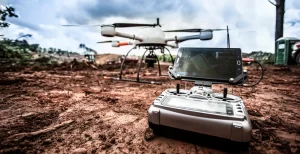The use of technology in construction in Zimbabwe is still in its infancy, but it has the potential to revolutionise the industry. By automating tasks, improving communication and providing access to real-time data, technology can help to make construction projects more efficient, safer and sustainable.
The construction industry is constantly evolving and technology is playing a major role in this evolution. In a previous edition of Structure and Design Magazine, we saw how 3D modelling and printing are being used to create detailed models of construction projects before they are built. This allows architects and engineers to visualize the project and identify potential problems early on. 3D printing is also being used to create prototypes of new building materials and components, which can help to improve the efficiency and quality of construction.
Building information modelling (BIM) is a process that creates and manages digital representations of a building’s physical and functional characteristics.
This information can be used to track the progress of a project, identify potential conflicts and optimise the use of materials and resources.
The advent of drones has seen them being used in various sectors. Drones can be used for a variety of tasks in construction, including remote surveying and inspection. At the same time, real-time data can be gleaned on the progress of a project, which can help to improve efficiency and safety.
Mostly associated with gamers and entertainment, augmented reality (AR) and virtual reality (VR) can be used to train workers, simulate construction projects and improve communication between project stakeholders. AR can be used to overlay digital information in the real world, while VR can create immersive virtual environments.
It will be an exciting time for the Zimbabwe construction industry when robots will be used for a variety of tasks in construction, including demolition, welding and painting. Robots can work in dangerous or repetitive environments, which can improve safety as well as efficiency.
Just like any other industry, the built environment relies on data, both historical and trending. So, big data can be used to analyse large amounts of information from construction projects. This data can be used to identify trends, improve decision-making and reduce costs.
Additionally, cloud-based software is making it easier for project teams to collaborate and share information. GPS technology is helping to improve the accuracy of surveying and construction. And mobile apps are providing workers with access to real-time data and instructions.
As the construction industry continues to adopt new technologies, we can expect to see even more dramatic improvements in the way structures are built. Technology has the potential to make construction more environmentally efficient and it is already having a positive impact on the way projects are completed.
Text by Perry Kaande
From: S&D ISSUE 60









